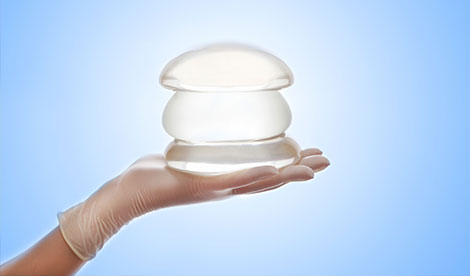

Blog

What the TGA ban on certain breast implants means
Monday December 9, 2019
In October 2019 the Australian Therapeutic Goods Administration (TGA) banned the use and recalled any implants not yet inserted for certain types of breast implants and tissue expanders. The decision was based on the incidence of breast lymphoma associated with breast implants (BIA-ALCL, or Breast Implant-Associated Anaplastic Large Cell Lymphoma).
Breast lymphoma is caused by the bacteria Ralstonia piggy-backing onto the implant at the time of insertion. This sets up a biofilm or results in a chronic irritation that leads to derangement of the lymphocytes in the small amount of what is otherwise considered to be physiological periimplant fluid.
The risk of a given implant being associated with breast lymphoma is directly related to the surface area of the breast implant. There is a direct relationship with the surface area of an implant and the risk of seeding with Ralstonia and the development of breast lymphoma.
There are four types of implants depending on the surface area or roughness:
- Type 1 – smooth implants
- Type 2 – micro textured implants, e.g. Mentor
- Type 3 – macro textured implants, e.g. Allergan, Eurosilicone
- Type 4 – poly urethane / foam covered.
It is the Type 3 and 4 implants that have been banned and can no longer be used. The Type 3 implants have a risk of approximately one in 3000, and the Type 4 implants between one in 300 to 3,000.
There is no increased risk of breast lymphoma above the background normal population rate for smooth implants (assuming they have not been put in a previously textured pocket).
Type 2 implants have a risk of 1 in 86,000.
These figures are based on the assumption that half-strength betadine was not used as a wash for the implants at the time of insertion. The relevance of this is that Ralstonia is exquisitely sensitive to half-strength betadine.
Half-strength betadine is now recommended by the Australian Society of Plastic Surgeons (ASPS) as part of the 14 steps to reduce the risk of breast lymphoma. The use of half-strength betadine was rare, however, prior to 2018 as the FDA in America banned the use of full-strength betadine around implants 20 years ago.
A few surgeons (author included) have, however, been using half-strength betadine for the last 20 years as the evidence relied upon by the FDA was not strong and slightly flawed two decades ago. The use of half-strength betadine may return the risk of micro textured implants to the same level or near the same level as community risk / risk of smooth implants.
Options for breast augmentation ongoing include the use of smooth and micro-textured breast implants. Although smooth implants have less risk of lymphoma, they have four times (24.2% vs 6.4%)[1] the rupture rate and three times (12.1% vs. 3.8%)[2] the severe capsular contracture rate compared to micro-textured implants.
A typical patient who develops breast lymphoma is seven years post breast augmentation and develops severe, recurrent swelling of one or both breasts. Any patient with breast implants who develops swelling needs to be immediately investigated with an ultrasound guided aspiration and examination of the fluid for lymphoma.
Ongoing surveillance of patients is now also required and my approach is to fully educate patients about breast lymphoma and determine their relative risk. Biennial (every second year) examination and imaging is also undertaken with either ultrasound or MRI depending on the patient’s age and preference.
If you have patients with implants, they should be referred to an appropriate service or specialist for ongoing evaluation, education and surveillance.
DISCLAIMER
Dr Mark Duncan-Smith is a Plastic Surgeon who offers breast surgery and the Medical Director of cosmetic-surgery.com.au and implantcheck.com.au. He is also a Vice-President of the AMA (WA).
References
[1] Canada. Health Canada. Drugs and Health Products, Summary Basis of Decision (SBD) for Mentor MemoryGel™ Silicone Gel-Filled Breast Implants. Mentor Corporation; 2014. Date Issued: January 16, 2014. https://hpr-rps.hres.ca/reg-content/summary-basis-decision-medical-device-detailOne.php?lang=en&linkID=SBD00412https://hpr-rps.hres.ca/reg-content/summary-basis-decision-medicaldevice-detailOne.php?lang=en&linkID=SBD00412
[2] Hammond D. Long-term clinical performance of Memoryshape® breast implants in breast augmentation and reconstruction: Prospective data through 10 years. 2015. American Association of Plastic Surgeons Annual Meeting. Scottsdale, Arizona.
Department of Health Notice on TGA ban and recall of breast implant devices
The Australian Therapeutic Goods Administration (TGA) has been conducting a review of breast implant devices available in Australia and has taken regulatory action in relation to all un-implanted breast implants and tissue expanders sold in Australia, including the suspension of eight products. Updates and further details can be found on the TGA website https://www.tga.gov.au/alert/breast-implants-and-anaplastic-large-cell-lymphoma
During the course of the TGA review, two companies chose to cancel the inclusion of their implant devices in the Australian Register of Therapeutic Goods (ARTG). On 2 August 2019, the Allergan company voluntarily recalled their un-implanted Biocell macro-textured breast implants and tissue expanders. The TGA has developed a fact sheet for health professionals about the Allergan recall, which provides guidance on how to manage patients with and without symptoms as well as information on implant identification, investigations (including diagnostic imaging) and referral.
A fact sheet has also been developed by the TGA to help consumers understand what the recall means for them. The TGA fact sheet advises consumers to see their GP as soon as possible if they have symptoms such as swelling, pain, a rash or a lump in their breast, armpit or elsewhere, or if they are not sure about changes in their breast.
The TGA has also imposed new conditions on product sponsors for all breast implant devices that remain available in Australia, including requiring sponsors to provide information on the risk of BIA-ALCL in patient information leaflets and clinician instructions for use. A list of all affected devices is available from the TGA website https://www.tga.gov.au/alert/current-status-breast-implant-products-australia
Implanting surgeons should be alert to the issue of BIA-ALCL and review the relevant literature in the context of their patients on a case-by-case basis.
For more information, see the TGA’s Information for Health Professionals.
Patients can also call HealthDirect on 1800 022 222 for further information.

